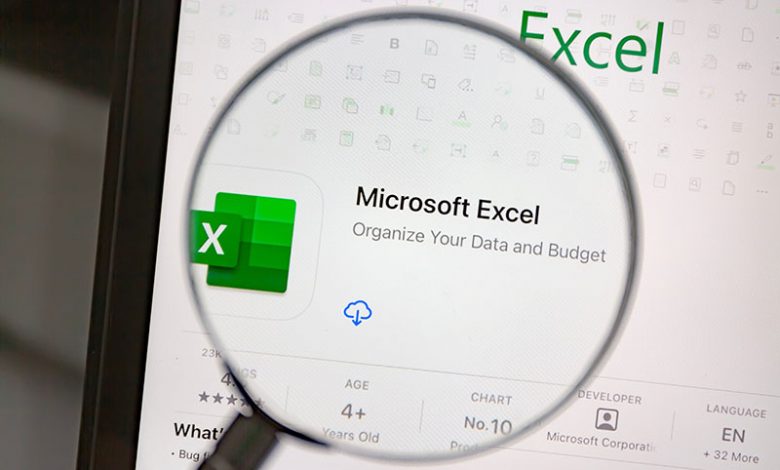How to Enable Auto Recover and Fix Corrupt Files in Microsoft Excel

If your Excel Auto Recover is not functioning correctly, the feature might not have been enabled. In such cases, you can manually activate the Auto Recover option using the following steps:
- Open Excel Application. To get started, first access the Excel application. Locate the Excel shortcut on your desktop or find it through your search bar and open the application.
- Access Excel Options Dialog Box. Once the Excel application is opened, navigate to the File menu. Click on it and select 'Options' from the drop-down list. This will open the Excel Options dialog box.
- Click the Save Tab. In the Excel Options dialog box, click on the Save tab. This will lead you to the document-saving options and configurations.
- Enable Auto Recover Feature. Under the Save Documents section, find the group that says 'Save files in this format.' Here, locate two checkboxes saying ‘Save Auto Recover information every day and ‘Keep the last Auto Recovered version if closed without saving.' Ensure both these checkboxes are marked. Set the Auto Recover frequency in minutes according to your preference. Once all these are done, click 'OK' to save the changes and enable the Auto Recover feature.
Following these steps should enable the Excel Auto Recover feature and resolve the issues with it not working.
Table of Contents
Fix Corrupt Files Using the Open and Repair Tool
If the Excel Auto Recover is not functioning due to a corrupted file, a built-in Microsoft tool called 'Open and Repair' exists to tackle and resolve this issue. The below steps will help you to harness this tool and recover your precious data from the faulty Excel file:
- Navigate to File, then the 'Open' Option. First, launch the Excel application. Go to the 'File' menu in the top left corner of the displayed interface. A drop-down list will appear, where you must select the 'Open' option.
- Browse to Find the Corrupt Excel File. Once the 'Open' dialog box appears, click on the 'Browse' button to navigate to the location of the corrupted Excel file on your computer.
- Use the 'Open and Repair' Feature from the Menu. Once you have located and selected the corrupted Excel file, find the 'Open' button at the bottom of the dialog box. Next to it, there will be a list box arrow. Click on the arrow and select the 'Open and Repair' option from the displayed list.
- Give Permission for Repair. A permission box will appear after choosing the 'Open and Repair' option. Click on the 'Repair' button to initiate the file repair process. This will start the recovery of lost data from the corrupted Excel file. You might have to wait for the repair process to complete.
By following these practical steps, you should be able to repair any corrupted Excel files, thus resolving the issue of Excel Auto Recover not working.
Understanding the Auto Recover Feature in Microsoft Office
To effectively troubleshoot issues with the Auto Recover feature, it is essential to understand how it works and its functionality. With a clear understanding of the Auto Recover feature, you can quickly determine and rectify any problems.
What Does Auto Recover Do?
Auto Recover is an in-built feature in Microsoft Office, particularly in Excel. Its primary function is to save copies of all open Excel files at a fixed interval set by the user. This feature can come in handy in sudden power outages or Excel application crashes, as it facilitates the users to recover any files that might not have been saved manually.
Default Settings and Automatic File Deletion
The Auto Recover feature default saves your Excel files every 10 minutes. However, you can adjust this interval according to your preferences under the Excel options. Moreover, the Auto Recovered Excel files are saved in a default location you can access to retrieve the files.
While the Auto Recover feature can be very helpful, it also deletes files under certain conditions to prevent cluttering. The Auto Recover files are discarded when:
- the file is saved with a new filename using the 'Save As' option,
- the file is manually saved or
- you close the file.
Additionally, if you disable the Auto Recover option for the current workbook, the files related to that will also be deleted. Understanding these dynamics of the Excel Auto Recover feature can help you diagnose and fix the potential issues causing the function to fail.
Recovering Unsaved Files with the Excel Registry
In a situation where the Excel Auto Recover function is not working and you have unsaved Excel files, you don't have to worry. These unsaved files are preserved within the Excel registry, and you can quickly recover them using the following steps:
- Navigate to File Tab and Info on the Left Pane. Open your Excel application and click on the 'File' tab at the screen's top left corner. Select 'Info' from the left pane to access the subsequent options.
- Click on the 'Manage Workbook' Button. Once in the 'Info' panel, find and click the 'Manage Workbook' button. This will open a dropdown menu with additional options.
- Select 'Recover Unsaved Workbooks. From the dropdown menu, choose the 'Recover Unsaved Workbooks' option. This directs Excel to retrieve all the workbooks that haven’t been saved.
- Pick Unsaved File for Recovery. Once the 'Open' dialog box appears, it will display all your unsaved workbooks. Browse through the list and select the unsaved file you wish to recover. Once you've picked the file, click the 'Open' button. The selected file will be opened in Excel.
Once the unsaved file is opened, remember to save it immediately to prevent future loss. This way, you can recover unsaved files even when the Excel Auto Recover feature fails to work.




